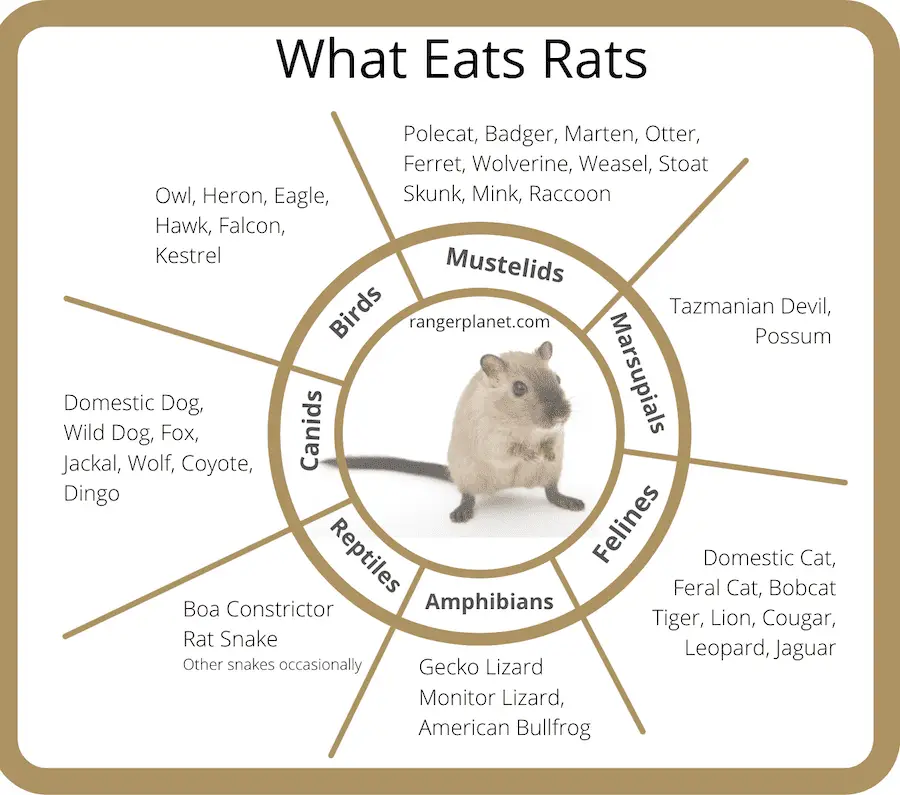Knowing what eats rats is interesting because it’s such a wide variety of animals. And rat predators are useful, they help stop the spread of diseases and damage to property and livestock carried out by rats, most predation forms a natural part of the food web.
Exactly what eats rats includes natural predators and occasional hunters. Many predators like to eat them as a snack, while others seek out rats as a source of primary nutrition.
Below I’ve added a detailed list of rat predators. But before we get into the details, here’s a glance at the list of rat predators and enemies.
Rat predators include birds of prey such as barn owls, hawks, falcons, and herons. Reptiles and amphibians include snakes and monitor lizards. Mammals include wolves, dogs, cats, weasels, skunks, foxes, mongooses, and coyotes. Other rats, plus human trapping and chemical poisons also kill rats.
The word “Predator” is not exactly a pleasant term. However, in the animal kingdom, nature has its way of dealing with aspects like population levels and the fine balance of the food web, some of the time, as is the case with rat predators, this balance can be beneficial for humans.
Read on, or see our Ranger Planet video added below. Visit the Ranger Planet Youtube Channel for more wildlife facts and information.
What eats rats: Rat predation
Rat predators help prevent the outbreak of potentially deadly diseases, as well as limit the damage to properties caused by these mischievous and fast multiplying creatures.
Rat hunters effectively eat them to survive, mostly. And in so doing – control their population.
Before diving into all the predators, here are a few interesting and relevant facts about rats:
- Rats live up to 3 years in captivity and live for around one year in the wild, mainly due to predation and unfamiliar environments.
- Both Rats and mice use their sense of smell, hearing and touch more predominantly than eyesight due to poor vision.
- Rats (and mice) have continuous growth of teeth that is 0.03cm a day, which means their teeth never stop growing.
Concerning mice, here’s the complete list of what eats Mice. Or check out what mice eat. You can also learn all about the dormouse.
You can also discover more about whether rats are nocturnal.
List of what eats rats
What eats rats – Animals that eat rats:
- Snakes
- Domestic Cat
- Feral Cat
- Bobcat
- Tiger
- Lion
- Leopard
- Jaguar
- Cougar
- Fox
- Jackal
- Wolf
- Coyote
- Dingo
- Wild Dog
- Owl
- Heron
- Eagle
- Hawk
- Falcon
- Kestrel
- Polecat
- Badger
- Marten
- Otter
- Ferret
- Wolverine
- Weasel
- Skunk
- Mink
- Raccoon
- Gecko Lizard
- Monitor Lizard
- American Bullfrog
- Tazmanian devil
- Opposum
- Other rats
- Humans
This is certainly an extensive list of the most common predators, but rats are predated by other animals. For the most part, all carnivorous or omnivorous animals that are large enough are able to hunt and kill rats.
Let’s go on to discuss the list in more detail…
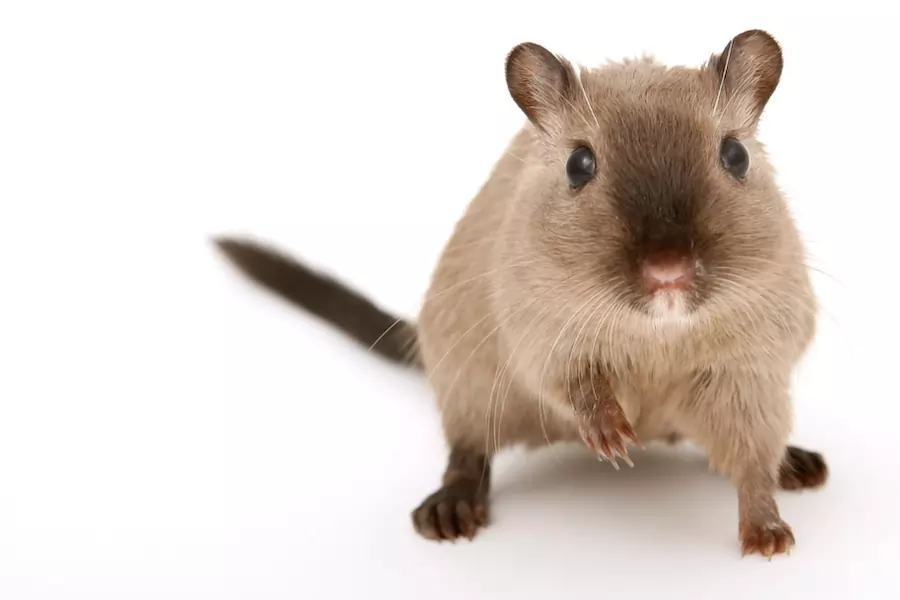
Reptiles ambush and eat rats
- Snakes (Boa Constrictor, Rat Snake, Other snakes occasionally)
The sustenance of the snake’s diet largely depends on small mammals like rats and mice, including both large and small species.
Snakes are also considered quite high on the list of prolific rat catchers …they play a vital role in controlling the insane population of rats. One is even referred to as the rat snake.
Snake habitats align well with the natural habitats of many rodents. One great feature of snakes’ ability to hunt rats and mice is their heat vision. They can sense the body heat of their prey and then pursue them.
Predator features:
Like others, snakes also have some remarkable adaptations to hunt their prey – rats, which include the following:
- Specialize senses: perfect for sensing when prey is close
- Vibrations: they cannot hear like us, but they focus on vibrations and interpret waves and locate their prey with the help of the lower jawbones
- Heat vision: the pits on their heads signal snakes to detect the body temperature of the prey.
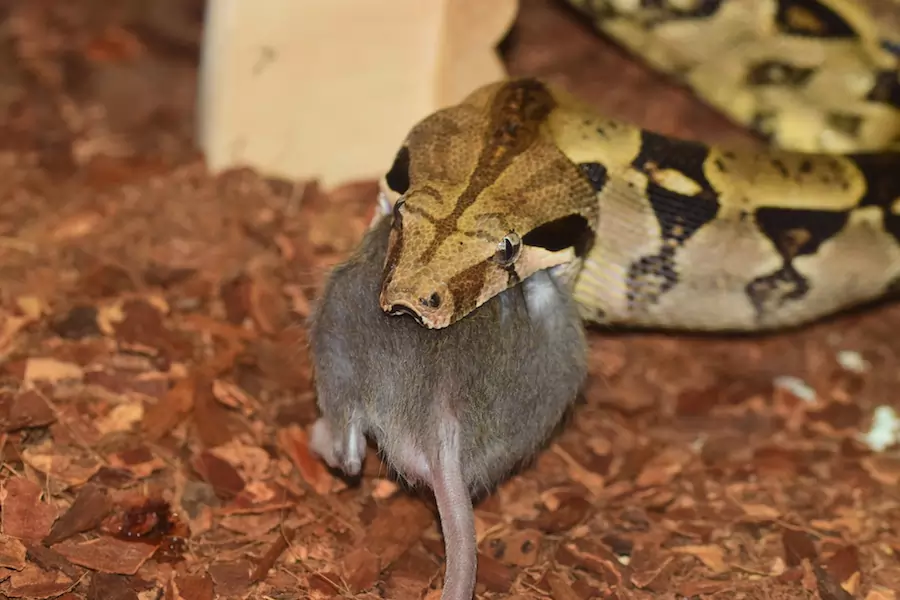
Felines are natural rat predators
- Domestic Cat
- Feral Cat
- Bobcat
- Tiger
- Lion
- Leopard
- Jaguar
- Cougar
Wild or domestic, all types of cats like to hunt and eat rats and mice to satisfy their energy needs, including wild and big cats.
So this includes all members of the cat family. Lions, leopards, tigers, and jaguars eat rats and mice to supplement their dietary needs when other food is insufficient or scarce.
Domestic cats tend to be crepuscular so they generally hunt around dawn and dusk. Predating features of cats (wild and domestic) include:
Predator features:
- Excellent photoreceptors: perfect eyesight for locating prey and detail in low light
- Excellent hearing: a heightened sense of hearing to locate prey in the dark
- Speed and agility: which assists with the speed in striking their prey
- Retractable claws: they can grip and scratch prey
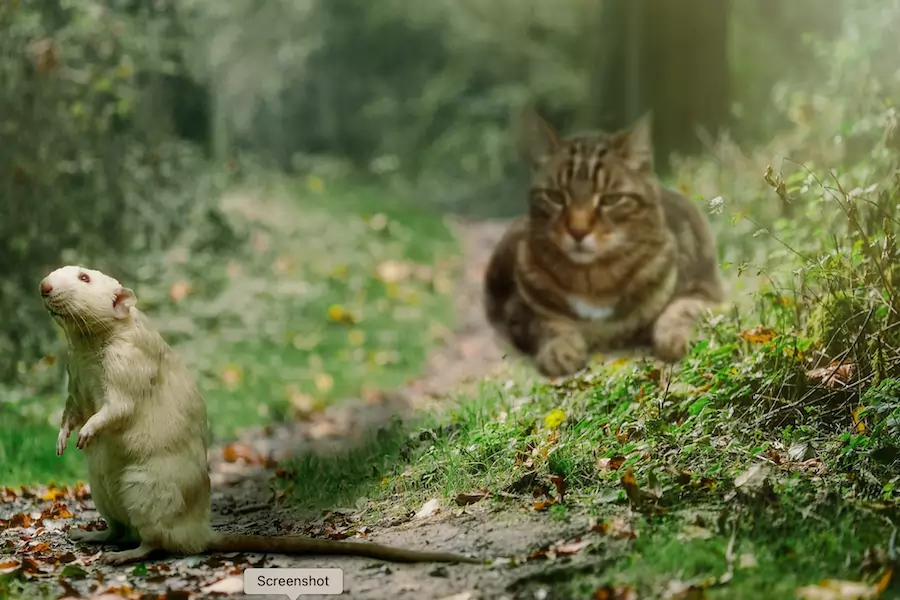
Canids hunt and eat rats
- Domestic Dog (Some breeds)
- Wild dog
- Fox
- Jackal
- Wolf
- Coyote
- Dingo
Canid, especially foxes, jackals, dingoes, and wolves, regard rats as a staple food source and hunt them to hunt mainly in winters when other food (larger prey) is tough to find.
Domesticated dogs don’t include rats much in their food, but dogs such as terriers and other breeds are trained to hunt specific prey.
Here’s the list of what wolves eat, You can also find out more about what Foxes eat, or what eats foxes. I even have an article about what arctic foxes eat.
Predator features:
- Sense of smell: with a sense of smell estimated between 10,000 to 100,000 times more acute than humans,
- Long legs: designed for speed and agility
- Large jaws: more than sufficient for crushing rats
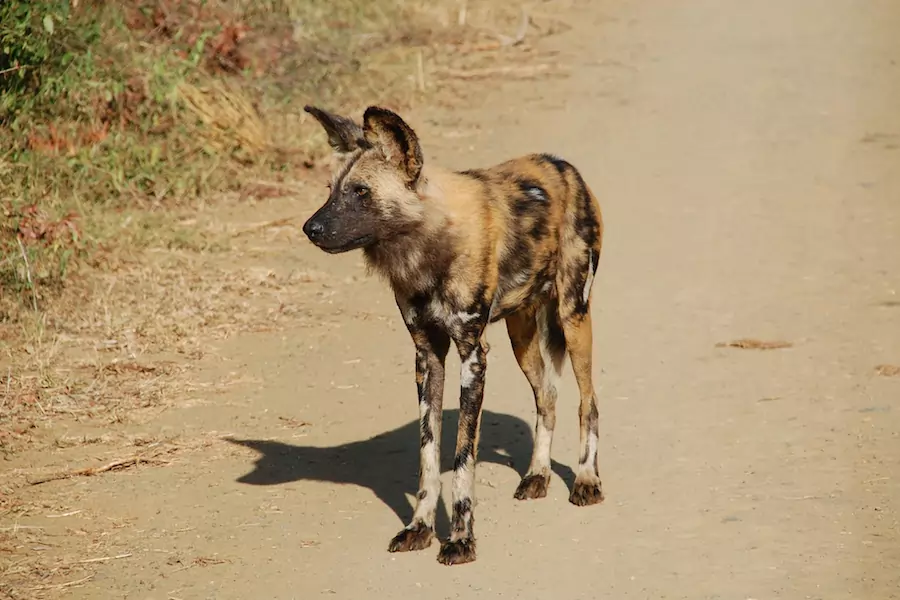
Birds are rat predators
- Owl
- Heron
- Eagle
- Hawk
- Falcon
- Kestrel
Rats and mice form a significant and fulfilling staple for the bird food diet. Talons are used to instantly pierce the rat to kill it or to injure it before finishing it off at the nest or kill site.
Here’s a full list of what herons eat. Or find out if wasps sting birds.
Predator features:
Here are a few predator features that all these birds share in predating rats, mice, or other rodents they hunt, catch and eat.
- Sharp vision: amazing eyesight to locate prey.
- Hooked beaks: they have hooked beaks to penetrate easily on their prey’s skin.
- Large talons: some have sharp and large talons that are another rat hunting feature.
Barn owls are natural rat predators
I’ve singled out the barn owl, as barn owls take a special place in the list of predators, they are very efficient in predating rats.
Dozens of rats (and mice) can be consumed by just a single family of owls in one night. Small mammals like mice, rats and voles are a staple diet for owls.
A family of five barn owls, including two adults and three young, will feed on about 1,000 rodents during a season. Made up largely of mice, rats, gophers, and voles.
Owls have incredible hunting techniques and are specialized in gaining a high success rate.
Predator Speciality:
Barn owls are equipped with natural weapons such as; incredible eyesight to focus and hunt quickly.
Some species of owls can even track in total darkness just by following the sound and locating their food. they can fly silently by dispersing air under their wingtips.
Barn owls also serve as a “helping hand” in agricultural areas as rats and mice can severely damage crops and create hurdles in maintaining, storage, and life span of grains.
Special predator features:
- Excellent night vision – owls eyes owls are large and developed for low light hunting
- Sensitive hearing – owls have up to 10x better hearing than humans
- Highly adapted feet and talons – an owl’s talons are very sharp, they can easily pierce the tough skin of their prey.
- Adapted wings feathers – soundless flight is a unique adaptation of owls
- No crops – crop is a loose sac within the throat area. Food, therefore, passes directly into the digestive system.
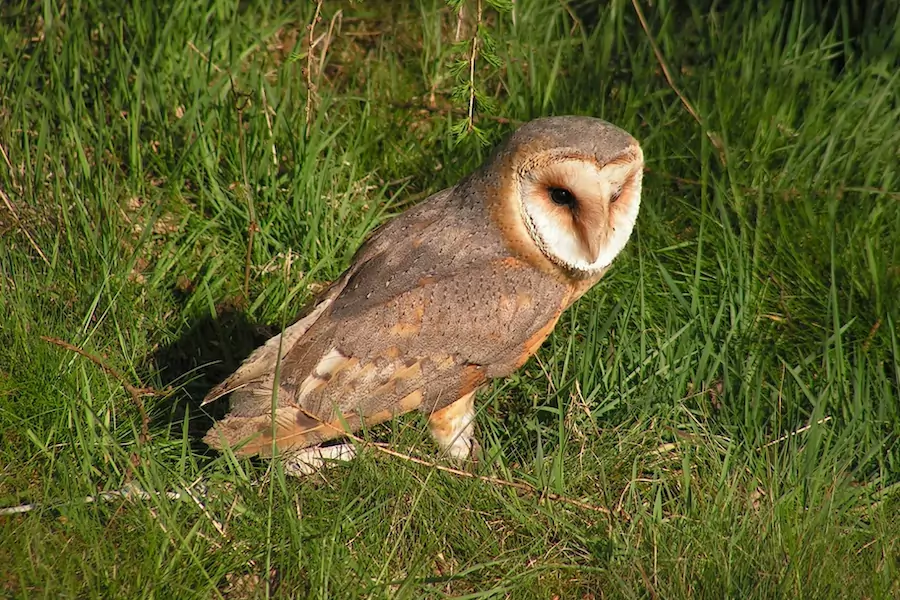
Mustelids predate rats
- Polecat
- Badger
- Marten
- Otter
- Ferret
- Wolverine
- Weasel
- Stoat
- Skunk
- Mink
- Raccoon
There are many mustelids (Of which the meat-eating species are commonly known as musteloids) that will actively hunt and eat rats. One of the most notable is that of the mink, whose speed, slim size, and agility make them excellent hunters of rats. They are also aggressive by nature and will hunt rats for fun.
Predator features
- Slim build: Smaller mustelids can run through rat nests to hunt out every rat deep into the nest
- Speed and agility: They are faster than rats
- Size: Some larger mustelids like badgers are larger in size and can dig through to nests
- Aggression: Some mustelids like mink are highly aggressive attackers
Here’s what skunks eat and here’s what minks eat
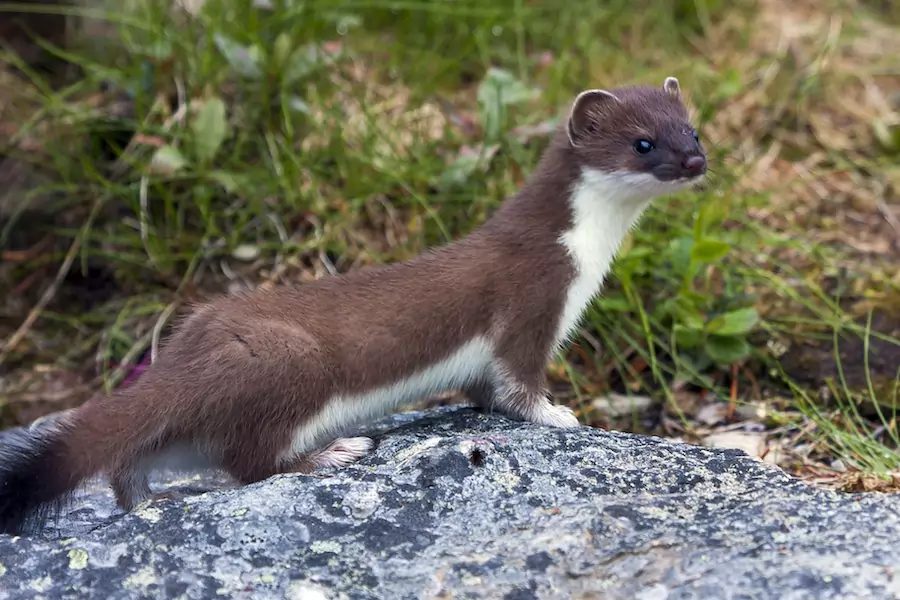
Amphibians are rat predators
- Gecko Lizard
- Monitor Lizard
- American Bullfrog
While smaller lizards like bearded dragons might hunt mice, some larger species of lizards hunt and feast on rats as a natural and regular part of their diet.
They are more slow and steady in hunting their prey compared to snakes for example. So their slow movement technique and often ambush-style attack differentiates them in hunting rats. Tokay Geckos tend to hunt smaller rat species, those commonly found in South East Asia.
Find out what toads eat. Or how long frogs can stay underwater.
Predator features:
- Patience: they can calmly wait for their prey and strike quickly to grab their prey.
- Senses: they make full use of their senses of touch, sight, olfaction, and hearing to evaluate when and if to strike.
- Venom: some have poison in their salivary glands.
- Sticky tongue: some use their long sticky tongue to ensnare their prey.
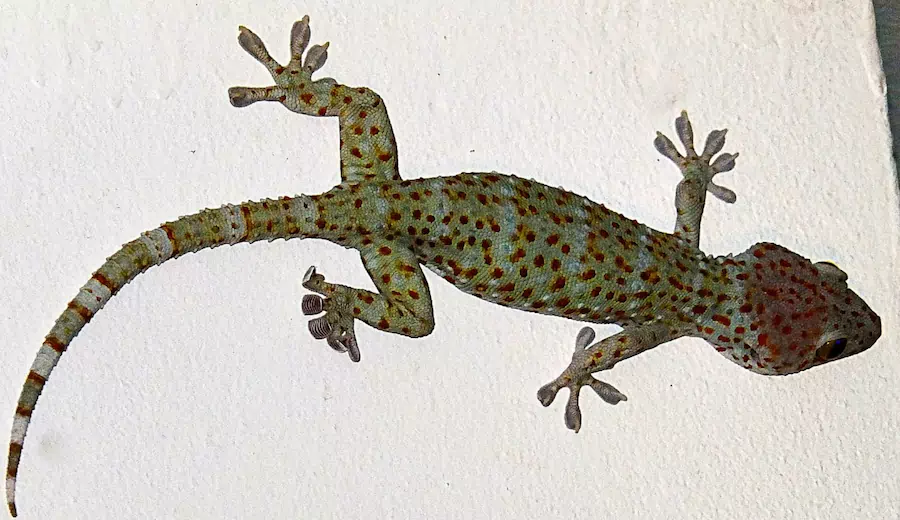
Marsupials hunt and kill rats
- Tazmanian devil
- Opposum
What eats rats: The opossum does, in large numbers. The Opossum is a major killer of rats, potentially greater than the owl and mink.
Predator features:
- Large size: Their larger size makes it easy for them to burrow into nests and overpower rats
- Large jaws: Powerful jaws meaens they are capable of biting down on a rat to kill it in one attack
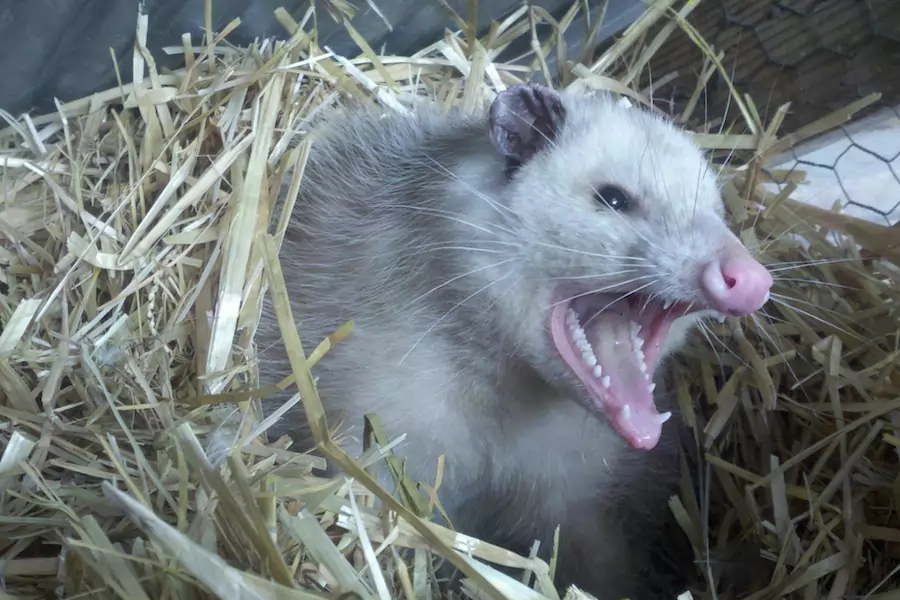
Rats eat other rats
Rats have been known to eat other rats. Both as mother rats who eat their young due to food shortages, Or between species, as for example, the Norway rat and the roof rat are natural enemies, even though they dwell in different habitats.
Humans also kill (and sometimes eat) rats
Some of us would not consider eating rats (or mice) as food while it’s delicious food for others.
In some cultures like China, Korea, Zambia, Malawi, rats, and mice are bred and served as meals as part of a native’s regular diet.
Many cultures though do not like rats to be kept as pets or captured and eaten as they consider them simply as vermin that pose a hazard to human health.
Many efficient devices have been created to eliminate rats and control their population, this helps to also limit the rat population, which can multiply rapidly.
Round up table of animals that eat rats
| Felines | Canids | Birds | Mustelids | Amphibians / Reptiles | Marsupials |
|---|---|---|---|---|---|
| Domestic Cat | Domestic Dog | Owl | Polecat | Gecko Lizard | Tazmanian Devil |
| Feral Cat | Wild Dog | Heron | Badger | Monitor Lizard | Opposum |
| Bobcat | Fox | Eagle | Marten | American Bull Frog | |
| Tiger | Jackal | Hawk | Otter | Snakes (Boa, Rat) | |
| Lion | Wolf | Falcon | Ferret | ||
| Leopard | Coyote | Kestrel | Wolverine | ||
| Jaguar | Dingo | Weasel | |||
| Cougar | Stoat | ||||
| Skunk | |||||
| Mink | |||||
| Raccoon |
That is what eats rats, here’s more wildlife help
I hope this article has helped in giving you some insight into rat predators. Be sure to check out my other articles on wildlife and other aspects of the animal kingdom. And check out the Ranger Planet Youtube Channel.
Here’s what eats mice, the list of mice predators, and here’s what mice eat.
